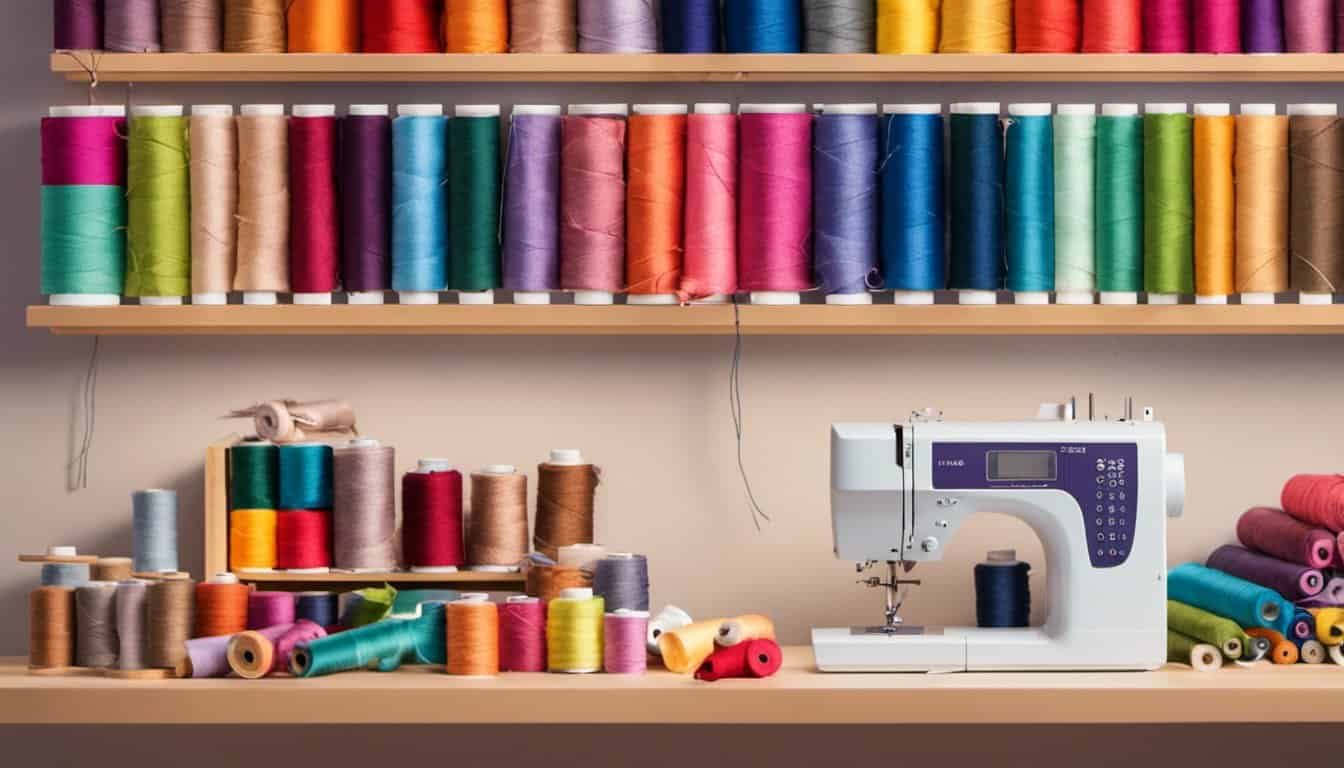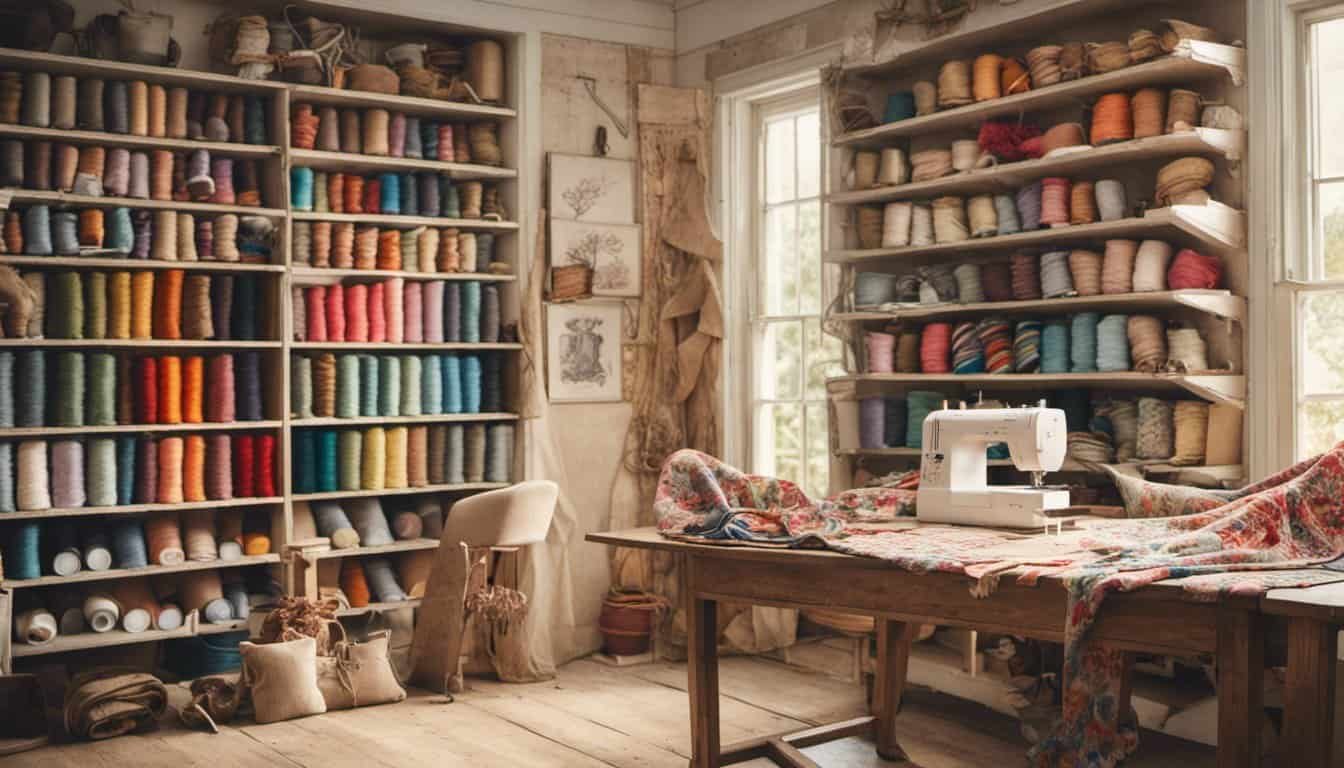Setting up a sewing space in a small area can feel challenging, but it’s totally doable! I’ve been there, struggling to find the right spot for my fabrics and tools. With a few smart tweaks, you can transform even the tiniest nook into a creative haven.
From choosing the right storage solutions to maximizing every inch, I’ll share the tips that helped me make the most of my compact sewing corner. Whether you’re a seasoned seamstress or just starting out, these ideas will help you create a functional and inspiring space to bring your projects to life.
Choosing the Perfect Location
Selecting the right location is crucial for maximizing your sewing space in a small area. I prioritize several factors to ensure my workspace is both functional and comfortable.
Space Availability
Assess available space by measuring the area. I choose corners or unused sections of a room to optimize every square foot. Compact furniture, like foldable tables, makes the most of limited space.
Lighting Conditions
Good lighting enhances precision in sewing tasks. I position my workspace near windows for natural light and supplement with LED lamps to ensure consistent illumination throughout the day.
Power Outlets
Access to power sources is essential for operating machines and other electronic tools. I ensure my sewing station is close to outlets, using surge protectors to manage multiple devices safely.
Accessibility
Easy access to materials and tools improves workflow. I organize essentials within arm’s reach, using shelves and pegboards to keep items neatly stored and readily available.
Noise Levels
A quiet environment minimizes distractions. I select a location away from high-traffic areas, allowing me to focus better on intricate projects without interruptions.
Ventilation
Proper ventilation maintains a comfortable temperature and air quality. I place my sewing space near a window or use a fan to ensure adequate airflow, especially when working with fabrics that emit fumes.
Storage Solutions
Efficient storage keeps the workspace uncluttered. I utilize vertical storage, such as wall-mounted racks, and invest in multi-purpose furniture to store fabrics, threads, and tools neatly.
By carefully considering these factors, I create a sewing space that enhances productivity and inspires creativity, even in small areas.
Essential Tools for Small Sewing Spaces
Having the right tools can make a small sewing space efficient and enjoyable. Here are the essentials that fit perfectly in compact areas.
Compact Sewing Machines
Choosing a compact sewing machine maximizes your workspace without sacrificing functionality.
- Lightweight Models: I prefer lightweight machines that are easy to move and store.
- Multi-Functionality: Machines with built-in features like multiple stitch options and embroidery capabilities save space by eliminating the need for additional devices.
- Built-In Storage: Some compact machines come with storage compartments for accessories, reducing clutter on your workspace.
- Foldable Designs: When not in use, foldable sewing machines can be tucked away, freeing up valuable space.
Portable Workstations
A portable workstation keeps your sewing area organized and adaptable to small spaces.

- Rolling Carts: I find rolling carts ideal for storing tools and materials, allowing me to move everything effortlessly.
- Foldable Tables: These tables provide a sturdy surface for sewing and can be easily folded and stored when not in use.
- Modular Units: Modular workstations let me customize storage solutions based on my current projects, ensuring everything has its place.
- Storage Compartments: Integrated drawers and shelves keep tools like scissors, threads, and patterns within easy reach, maintaining an orderly workspace.
Maximizing Storage Solutions
Organizing a small sewing space requires smart storage strategies. Here are effective methods to keep everything in order.
Utilizing Vertical Space
Vertical storage optimizes limited floor area. Install shelves above the workspace to store fabrics and tools. Use pegboards to hang scissors, rulers, and other essentials. Consider tall bookcases to hold patterns and books. Hooks on walls can keep frequently used items within reach. This approach frees up tabletop space and maintains easy access to materials.
Multi-Functional Furniture
Choose furniture that serves multiple purposes. Opt for desks with built-in storage drawers for storing threads and needles. Use ottomans that double as storage boxes for larger items like fabric bundles. Invest in a sewing table with adjustable heights to switch between work and storage modes. Rolling carts provide portable storage solutions, allowing you to move supplies as needed. Multi-functional pieces help maximize space while keeping your sewing area tidy.
Enhancing Lighting and Ergonomics
Creating a comfortable and well-lit sewing space boosts both productivity and enjoyment.
Task Lighting Options
Proper lighting is essential for detailed work. I use these lighting options to ensure clarity:
- LED Desk Lamps: Provide bright, adjustable light directly over the workspace.
- Natural Light: Position the sewing area near windows to maximize daylight.
- Overhead Lighting: Install ceiling lights to illuminate the entire space uniformly.
- Clip-On Lamps: Attach to shelves or tables for additional focused lighting when needed.
Comfortable Seating
- Adjustable Chairs: Allow customization of height and back support for optimal posture.
- Cushioned Seats: Offer comfort during extended use, reducing fatigue.
- Footrests: Provide support for legs, enhancing overall comfort and circulation.
- Swivel Base: Enables easy movement around the workspace without stretching.
Personalizing Your Sewing Space
« 10 Secrets on How to Press Fabric Before Sewing: Beginner’s Ultimate Guide
How to Sew a Collar Stand for Shirts: 7 Expert Tips You Must Try »
Personalizing my sewing space makes it both functional and inspiring. Here are some strategies I use:
Color Scheme
I choose colors that spark creativity and provide visual comfort. Light hues like white, pastels, or neutrals make my small space feel larger and brighter. Sometimes, I add an accent wall in a favorite color to inject personality without overwhelming the area.
Decorative Storage
I incorporate storage solutions that match my style. Stylish storage boxes, wicker baskets, and decorative bins keep my fabrics, threads, and tools organized. Clear labeling ensures everything is easy to find.
Lighting Enhancements
Beyond essential lighting, I add aesthetic fixtures like pendant lamps or fairy lights. These create a warm, inviting atmosphere and highlight my workspace beautifully.
Inspirational Artwork
I display artwork or prints that motivate me. Pieces related to sewing, crafts, or my personal interests help keep me focused and inspired while working.

Comfortable Seating
I invested in a comfortable, ergonomic chair that fits my style. Cushions in my favorite colors or patterns add a personal touch and ensure comfort during long sewing sessions.
Plants and Greenery
Adding small plants or succulents brings life and freshness to my sewing space. Plants improve air quality and introduce a natural element to my workspace.
Personalized Tools
I customize my tools and accessories. I’ve used fabric paint to color my sewing machine cover, engraved my scissors, and arranged my tools in a way that suits my unique workflow.
Organizers and Pegboards
I use pegboards and wall-mounted organizers to display frequently used tools. Choosing hardware that matches my room’s decor keeps the look cohesive and stylish.
By integrating these personal touches, my sewing space not only functions well but also reflects my creativity and style.

Conclusion
Creating a cozy sewing nook in a small space has been a rewarding journey for me. It’s amazing how a few thoughtful adjustments can transform a limited area into a functional haven. I’ve found that with the right setup, sewing becomes even more enjoyable and inspiring.
Seeing everything organized and within reach makes each project smoother and more satisfying. Plus bringing in personal touches has made the space uniquely mine, fueling my creativity every day. Whether you’re just starting out or looking to optimize your current setup, a well-planned sewing space can truly enhance your crafting experience.
Embrace the challenge of small spaces and watch your sewing corner become a place where ideas flourish and projects come to life.

















